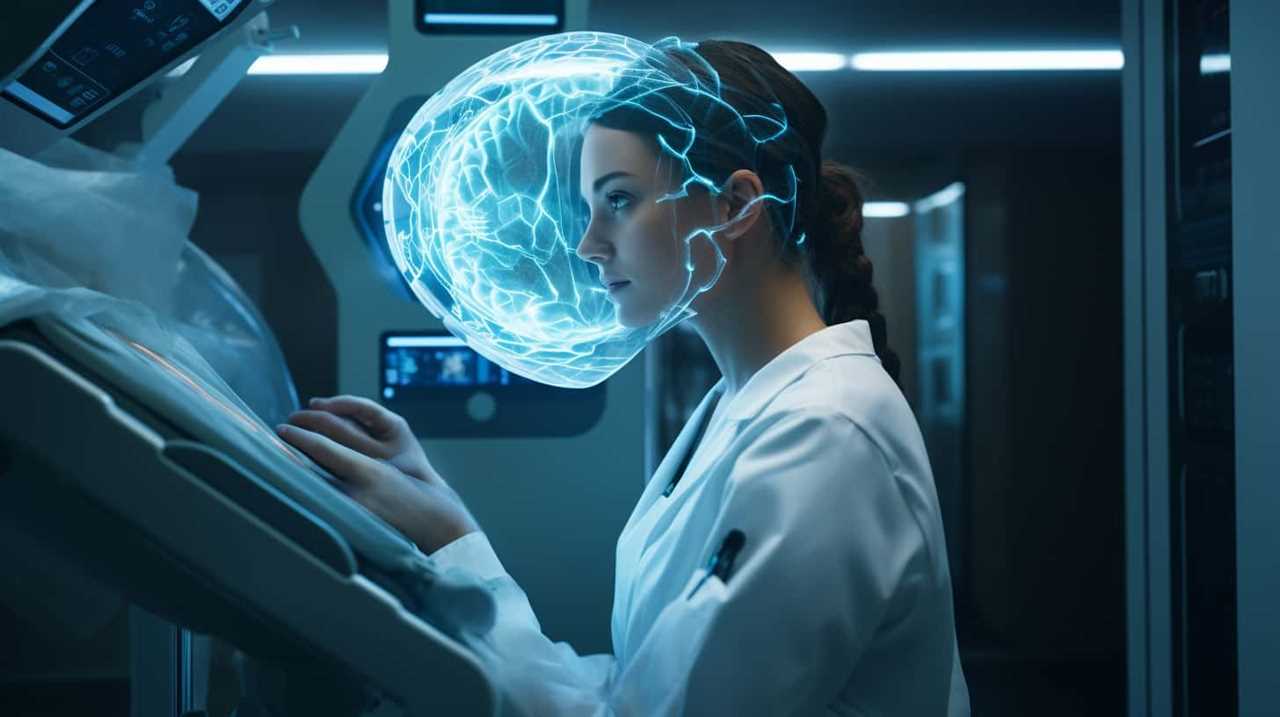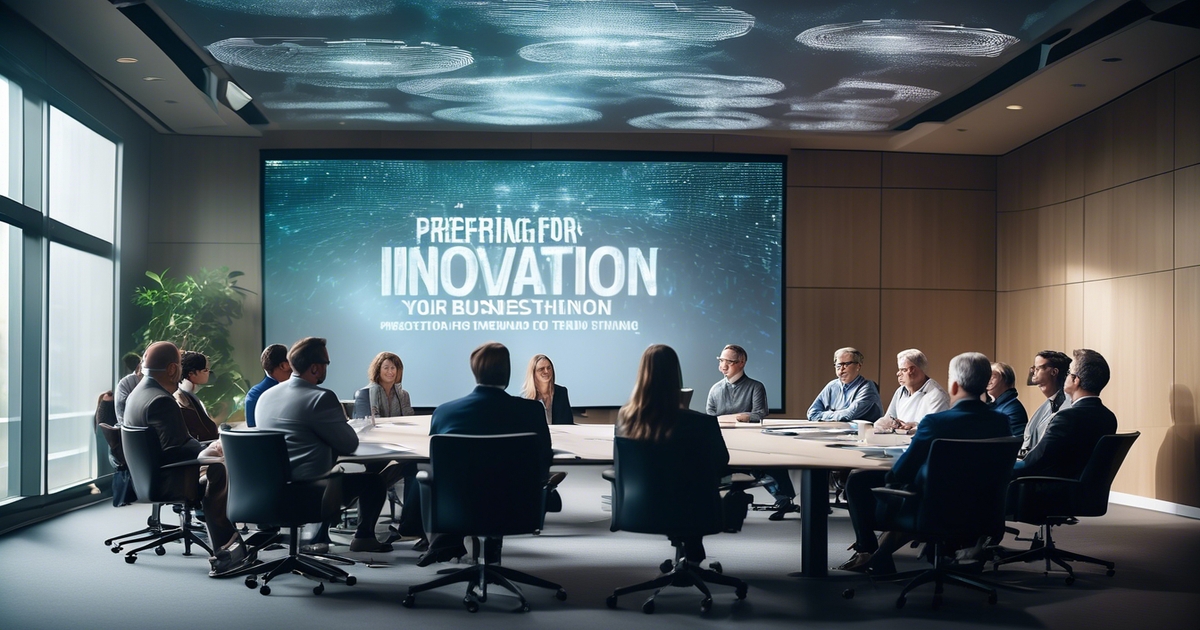We have all heard the alarming statistic: medical errors lead to hundreds of thousands of deaths annually. What if there was a solution to reduce these errors and enhance diagnostic precision?
Enter medical imaging AI. With its advanced algorithms and machine learning capabilities, medical imaging AI has the power to enhance detection of abnormalities, provide faster and more accurate diagnoses, improve visualization in complex cases, and facilitate communication among healthcare professionals.
This article explores the untapped potential of medical imaging AI in revolutionizing patient care.
Key Takeaways
- Medical imaging AI significantly improves the detection and diagnosis of abnormalities.
- AI technology allows for rapid identification and pinpointing of abnormalities, leading to prompt diagnosis and treatment.
- AI algorithms enhance the clarity and accuracy of medical images, enabling better visualization of intricate details and abnormalities.
- Medical imaging AI has the potential to revolutionize healthcare by improving screening methods, enabling precision medicine, and significantly improving patient outcomes.
Enhanced Detection of Abnormalities
We have observed a significant improvement in the detection of abnormalities through the implementation of medical imaging AI.
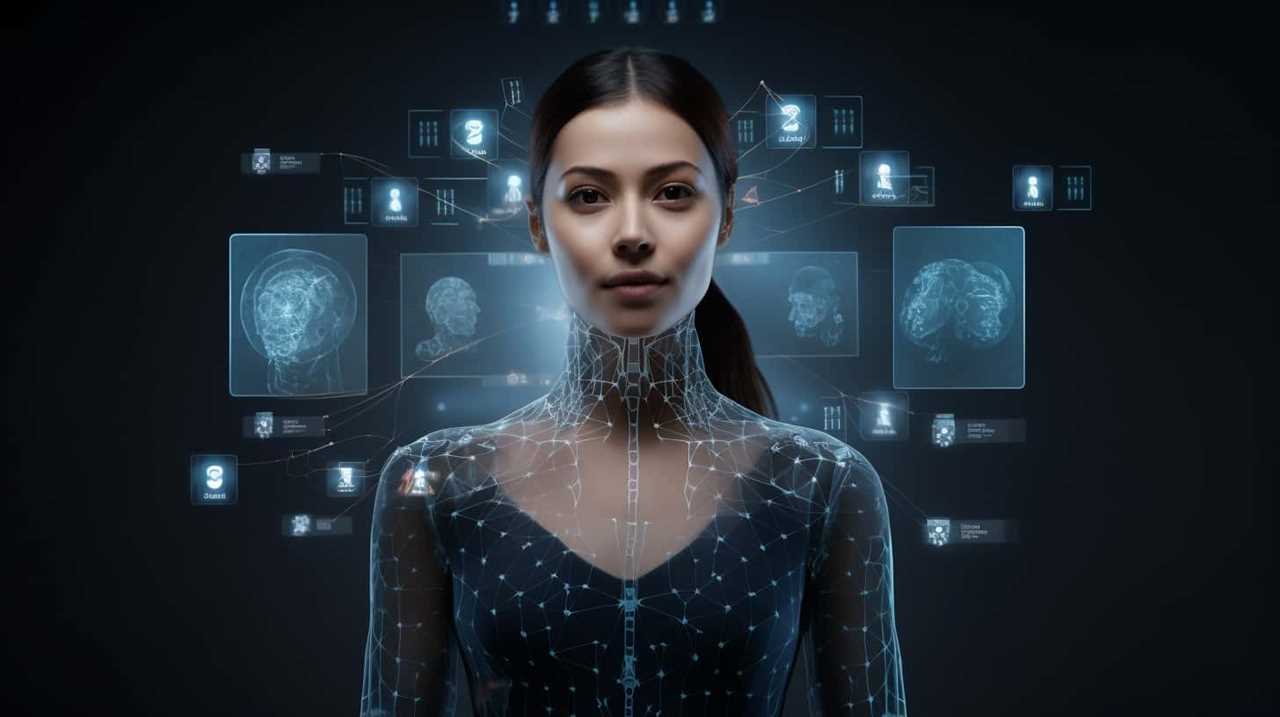
With the use of automated analysis and advanced algorithms, medical imaging AI has revolutionized the way we identify and diagnose abnormalities in medical images.
These cutting-edge technologies allow for a more accurate and efficient detection process, reducing the chances of human error and providing timely diagnoses.
Through automated analysis, medical imaging AI can quickly analyze vast amounts of data, identifying subtle abnormalities that might’ve been missed by human observers.
The advanced algorithms used in medical imaging AI systems enable the detection of patterns and anomalies that are often difficult to detect with the naked eye.
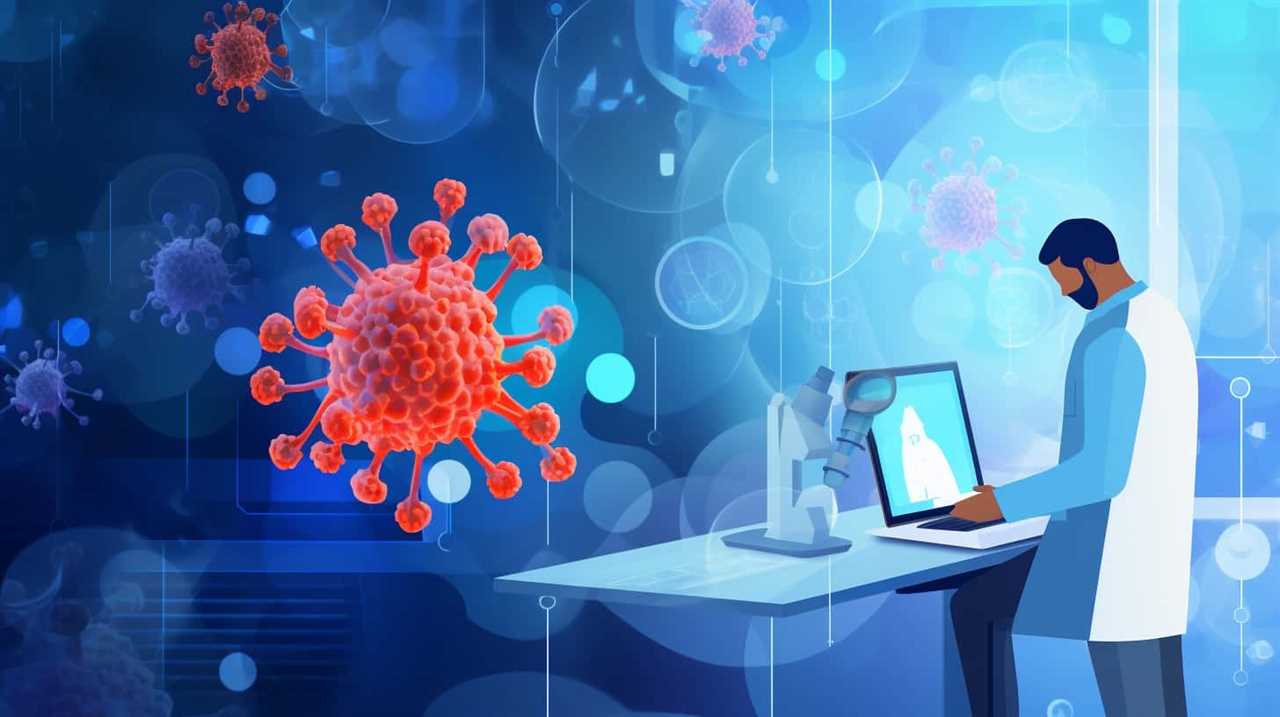
Faster and More Accurate Diagnosis
Our implementation of medical imaging AI has significantly improved the speed and accuracy of our diagnosis process. This has led to improved patient outcomes and increased efficiency in our healthcare system.
Here are three key ways in which our AI technology has revolutionized the diagnostic process:
- Rapid Identification: With AI algorithms analyzing medical images, we can quickly detect and pinpoint abnormalities, allowing for prompt diagnosis and treatment. This reduces the time spent waiting for results and expedites the delivery of necessary care.
- Enhanced Accuracy: By leveraging the power of AI, we’ve achieved higher accuracy rates in diagnosing conditions, ensuring more precise and targeted treatment plans. This minimizes misdiagnoses and maximizes the potential for positive patient outcomes.
- Streamlined Workflow: Medical imaging AI has streamlined our diagnostic workflow, automating repetitive tasks and freeing up valuable time for our healthcare professionals. This increased efficiency allows us to see more patients, reducing wait times and improving overall patient satisfaction.
Improved Visualization of Complex Cases
With the integration of medical imaging AI, we’re able to achieve improved visualization of complex cases. This is made possible through the use of improved image analysis and advanced imaging techniques.
Medical imaging AI algorithms can enhance the clarity and accuracy of medical images, allowing healthcare professionals to better visualize intricate details and abnormalities. By analyzing images at a pixel level, AI algorithms can identify subtle patterns and markers that may not be easily discernible to the human eye.

This improved visualization can aid in the detection and diagnosis of complex cases, leading to more accurate and timely treatment decisions. Furthermore, it can assist in the planning and execution of complex surgical procedures.
As we delve further into the power of medical imaging AI, we’ll explore how it enhances communication and collaboration among healthcare professionals.
Enhanced Communication and Collaboration Among Healthcare Professionals
Improved visualization of complex cases through medical imaging AI also enhances communication and collaboration among healthcare professionals. This technology enables interdisciplinary teamwork by allowing radiologists, physicians, and other healthcare providers to easily share and discuss imaging findings.
Here are three ways enhanced communication and collaboration benefit healthcare professionals:
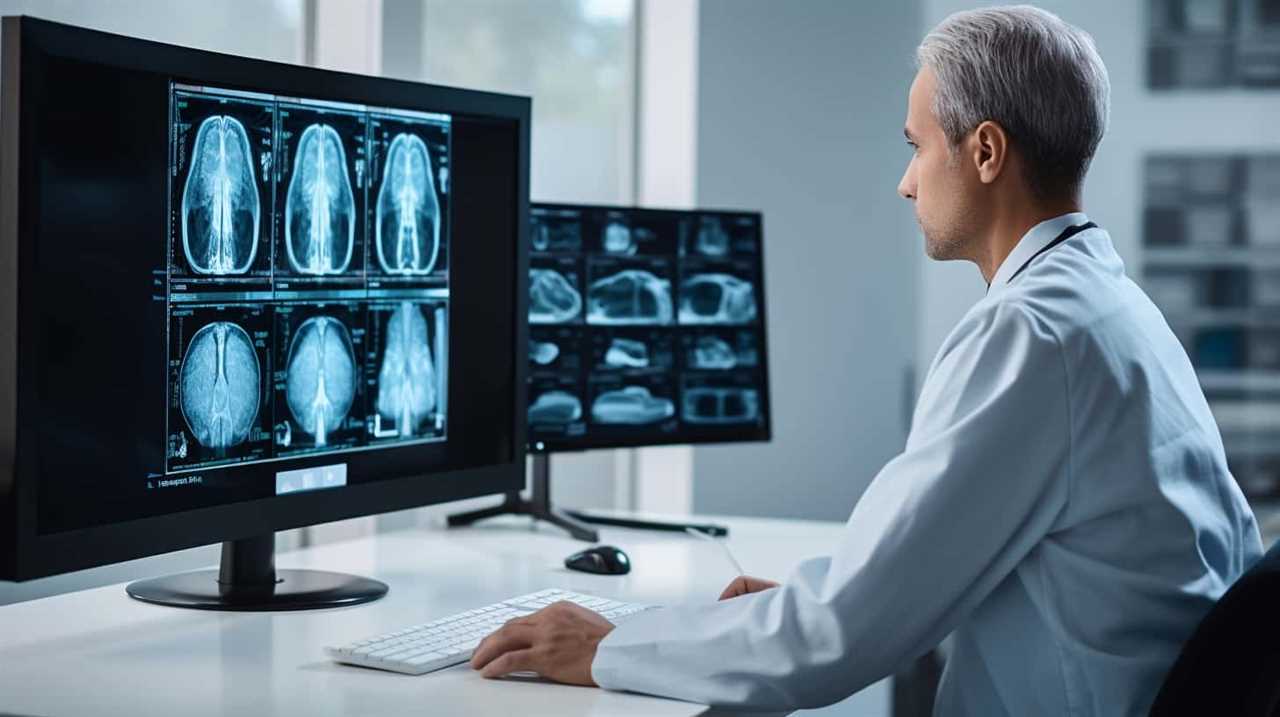
- Efficient information sharing: With medical imaging AI, healthcare professionals can quickly access and share imaging data, enabling faster and more accurate decision-making. This streamlined communication enhances patient care, reducing delays in diagnosis and treatment.
- Improved interdisciplinary collaboration: Medical imaging AI promotes collaboration among different specialists, such as radiologists, surgeons, and oncologists. By facilitating the exchange of expertise and perspectives, it enhances the accuracy and quality of patient care.
- Enhanced care coordination: AI-powered medical imaging solutions enable seamless communication and coordination among healthcare professionals involved in a patient’s care. This ensures that all team members are well-informed, leading to more effective treatment planning and improved patient outcomes.
Enhanced communication and collaboration through medical imaging AI significantly contribute to streamlined patient care and foster a more cohesive healthcare team.
Potential for Early Detection and Intervention
By leveraging medical imaging AI, we can enhance early detection and intervention for improved patient outcomes.
Medical imaging AI has the potential to revolutionize the field of healthcare by improving screening methods and enabling precision medicine. With the ability to analyze vast amounts of medical images quickly and accurately, AI algorithms can detect subtle abnormalities that may be missed by human radiologists.
This improved screening capability allows for earlier detection of diseases such as cancer, enabling timely interventions and potentially increasing the chances of successful treatment.

Furthermore, medical imaging AI can aid in the development of personalized treatment plans through precision medicine. By analyzing medical images along with patient-specific data, AI can help identify the most effective treatment options tailored to an individual’s unique needs.
Ultimately, medical imaging AI has the potential to significantly improve patient outcomes by enabling early detection and intervention, as well as personalized medicine.
Frequently Asked Questions
How Does Medical Imaging AI Enhance the Detection of Abnormalities?
Medical imaging AI enhances the detection of abnormalities by improving accuracy and increasing efficiency. It can analyze medical images with precision, identifying subtle signs of diseases that may be missed by human observers.
What Are the Benefits of Faster and More Accurate Diagnosis Using Medical Imaging Ai?
Faster and more accurate diagnosis using medical imaging AI has several benefits. It improves patient outcomes by enabling timely treatment, while also increasing efficiency in healthcare delivery by reducing the need for unnecessary tests and procedures.
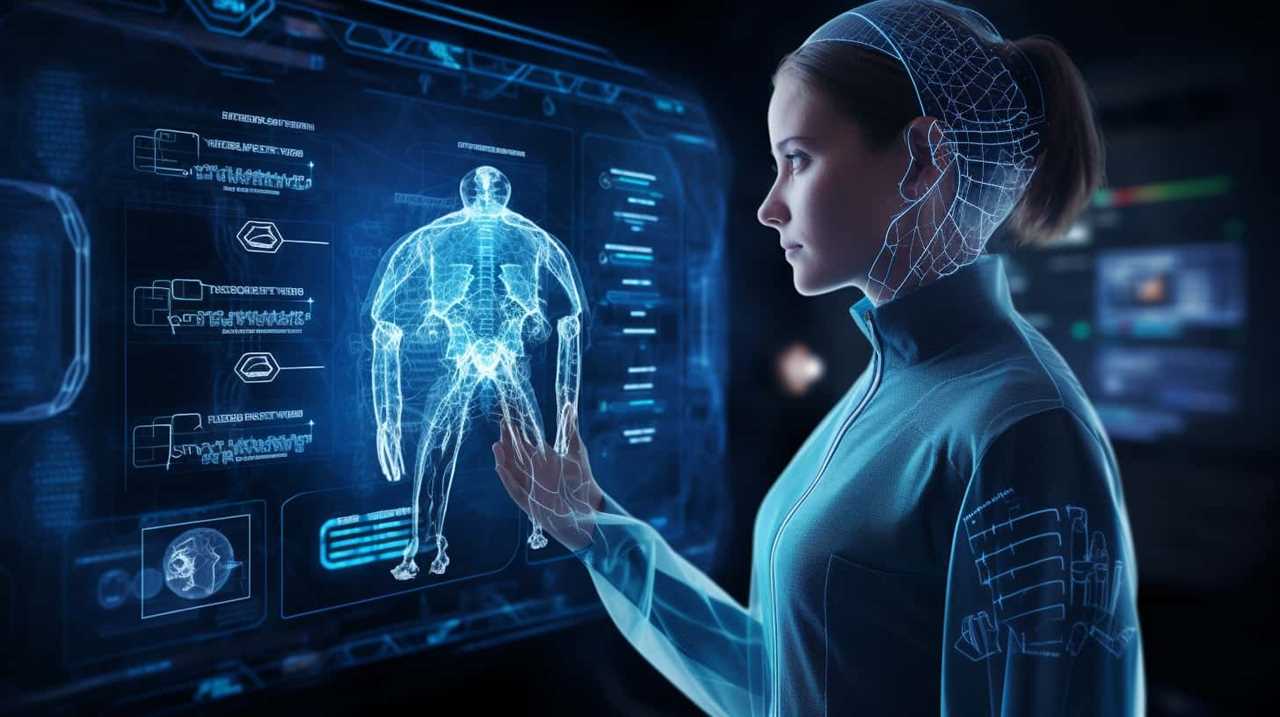
How Does Medical Imaging AI Improve the Visualization of Complex Cases?
Improved interpretation using medical imaging AI enhances decision making in complex cases. The power of AI enables us to visualize intricate details, making diagnosis more accurate and efficient.
In What Ways Does Medical Imaging AI Enhance Communication and Collaboration Among Healthcare Professionals?
Enhanced collaboration and improved communication are key benefits of medical imaging AI. It allows healthcare professionals to easily share and analyze medical images, leading to more accurate diagnoses and treatment plans.
How Does Medical Imaging AI Contribute to the Potential for Early Detection and Intervention?
Medical imaging AI enhances early diagnosis and intervention potential. It analyzes medical images with precision, detecting subtle abnormalities that may indicate early stages of diseases. This enables timely interventions and better patient outcomes.
Conclusion
In conclusion, the power of AI in medical imaging is truly remarkable. With its enhanced detection capabilities, faster and more accurate diagnoses, improved visualization of complex cases, and enhanced communication among healthcare professionals, the potential for early detection and intervention is immense.
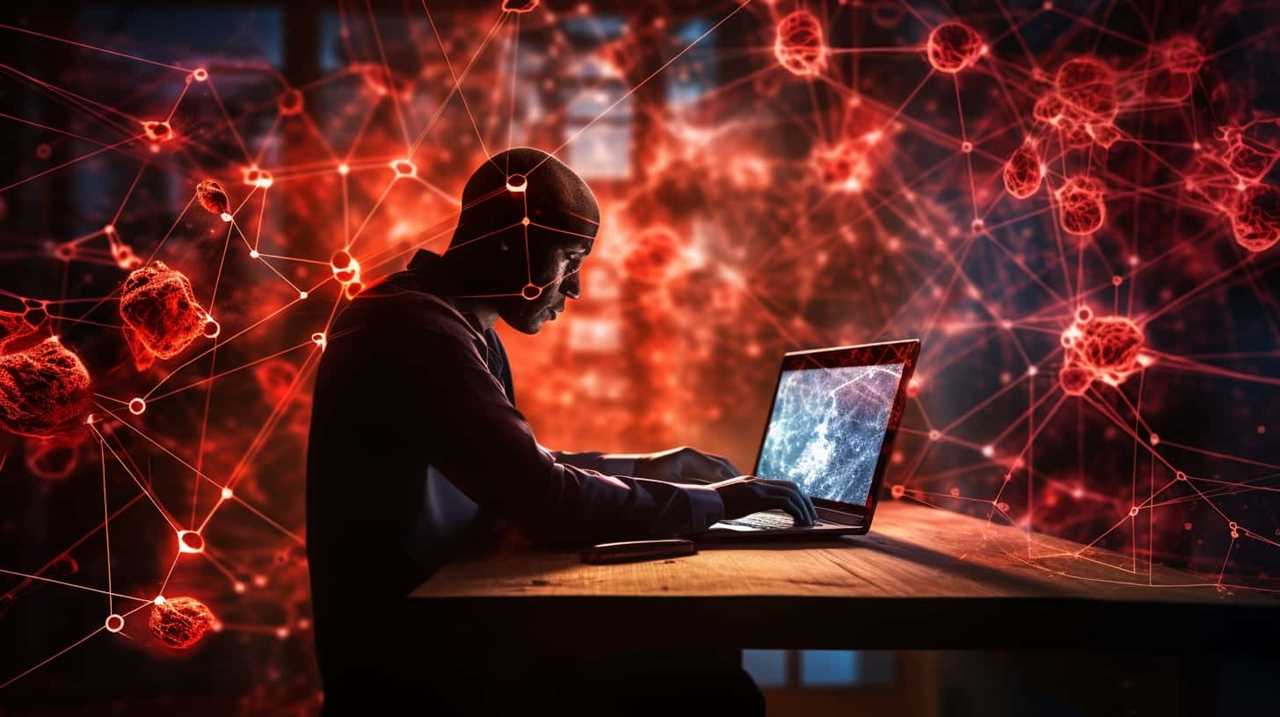
It’s ironic how a technology designed to complement human expertise is now surpassing it, but it’s a testament to the incredible advancements in the field.
Medical imaging AI is undoubtedly revolutionizing the way we diagnose and treat patients, paving the way for a brighter future in healthcare.

